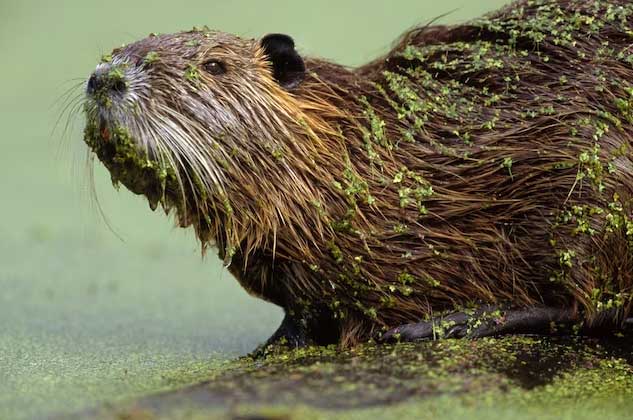Many states in the U.S. are grappling with solutions to deal with the increasing population of this invasive species. Each female can give birth to up to 200 offspring within just three years.
The invasive species in question is the nutria, also known as the coypu. According to the U.S. Department of Agriculture, the coypu is native to South America. They were introduced to the U.S. in 1889 through the fur trade. When the fur market collapsed in the early 1940s, thousands of coypus escaped or were released by farmers who could no longer care for them.
Since then, this rodent has spread to at least 20 states and caused significant damage. Coypus weigh between 5-10 kg, often exceeding 9 kg. This giant rodent can consume an amount of food equal to 1/4 of its body weight each day.
Although most coypus live less than three years in the wild, a female can produce up to 200 offspring in a short lifespan.

Coypu invading the U.S. (Photo: AP).
In Texas, the coypu is among the most hunted invasive species. In Oregon, hunting for them occurs year-round. California hopes this invasive species will soon face extinction. State and federal authorities in Maryland have spent over two decades and $30 million to eliminate coypus and are ready to assist other states.
Trevor Michaels, a wildlife biologist at the U.S. Department of Agriculture, leads the nutria eradication project. His team tracks down invasive coypus across more than 202,000 hectares of land and wetlands using a technique called “thunderous boom”, where they use nets to trap and remove coypus before moving to the next area. In 2015, after capturing 14,000 coypus, authorities in Maryland eliminated the last one.
Louisiana is aiming to eliminate 400,000 coypus annually. The swamps in this state are so overrun with coypus that authorities pay $6 for each tail during the hunting season. Louisiana has spent $30.2 million in bounties for 6.1 million captured coypus since launching the Coastwide Nutria Control program in 2002.

A coypu found in Louisiana, USA. (Photo: NatGeo).
According to the Wall Street Journal, populations of the coypu are spreading and increasing in many states across the U.S.
Currently, many states are implementing various solutions to eliminate this giant rodent before they destroy local wetlands.
For instance, in Texas, the coypu is one of the most hunted invasive species. Similarly, in Oregon, hunting coypus also takes place year-round. Notably, the Maryland government has spent 20 years and $30 million (over 714 billion VND) to eliminate 14,000 coypus across hundreds of thousands of acres.
Maryland’s methods include capturing coypus using a net system, tagging some with chips to help environmental specialists identify their relatives. In fact, many states in the U.S. are adopting similar methods, such as California.
California is also implementing part of Maryland’s strategy, using scent dogs in the Chesapeake Bay to locate coypus in the Sacramento-San Joaquin Delta region. Authorities are also improving on the tactics used in Maryland, setting traps to catch a few individuals and fitting them with radio collar signals to lead them to other coypus. “Coypus don’t have necks, so putting collars on them is extremely challenging,” said Valerie Cook, the manager of the coypu eradication program in California. Instead, California plans to use satellite tags that can be monitored remotely.
The Illinois Department of Natural Resources is collaborating with the Wildlife Agency to survey coypus. They removed over 1,500 coypus in 2022.
However, according to Valerie Cook, a specialist in managing coypu eradication in California, the rotund shape of this rodent makes collaring them difficult.
Representative Josh Harder from California stated: “This is truly a problem, and we must act quickly before coypus completely invade our waterways.”


















































